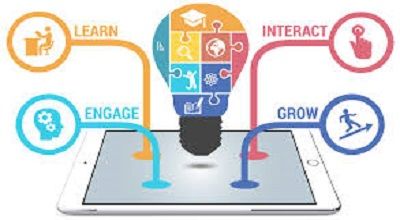Apps in Education
Using apps in education can be a powerful way to enhance learning experiences, engage students, and make the educational process more interactive and enjoyable. Here are some steps and considerations for effectively using apps in education:
Define Learning Objectives:
- Start by clearly defining the learning objectives you want to achieve with the app. Determine what specific skills or knowledge you want students to gain by using the app.
Choose the Right App:
- Research and select educational apps that align with your learning objectives and curriculum. Consider factors such as grade level, subject matter, and the app’s educational quality.
Integrate Apps Into the Curriculum:
- Incorporate the use of apps into your lesson plans and curriculum. Ensure that they complement and enhance your existing teaching methods and materials.
Provide Clear Instructions:
- Clearly explain to students how to use the app and what is expected of them. Provide guidelines for how the app fits into the lesson and how it supports their learning.
Monitor Usage:
- Keep track of how students are using the app. Monitor their progress, and provide feedback and support as needed. Some apps may offer analytics or reporting features to help with this.
Encourage Collaboration:
- Use apps that facilitate collaboration and peer interaction. Encourage students to work together on assignments or projects using the app’s features.
Differentiate Instruction:
- Many educational apps offer customization and adaptability features. Use these to tailor the learning experience to individual student needs and abilities.
Assess Learning:
- Use the app as a formative assessment tool to gauge student understanding and progress. Some apps may offer quizzes, assignments, or other assessment features.
Address Accessibility:
- Ensure that the chosen apps are accessible to all students, including those with disabilities. Consider options for providing alternative materials or accommodations as needed.
Balance Screen Time:
- Be mindful of screen time and strike a balance between using apps and other instructional methods. Excessive screen time can have negative effects on students’ well-being.
Stay Informed:
- Stay updated on the latest educational technology trends and research. Continuously evaluate and adapt your use of apps based on what works best for your students.
Professional Development:
- Invest in professional development for both teachers and students to maximize the benefits of using educational apps. Teachers should be comfortable with the technology and its integration into the classroom.
Seek Feedback:
- Encourage students to provide feedback on their experiences with the app. Their input can help you make informed decisions about app selection and usage.
Evaluate App Effectiveness:
- Periodically assess whether the app is achieving the desired learning outcomes. If it’s not effective, be willing to explore alternative apps or strategies.
Privacy and Security:
- Be aware of privacy and security considerations when using apps, especially if they involve student data. Ensure that the app complies with relevant data protection regulations.
Final Words
Remember that while educational apps can be valuable tools, they are most effective when used as part of a broader teaching strategy that includes hands-on activities, teacher-led instruction, and other traditional teaching methods. The goal is to create a balanced and engaging learning environment that leverages the benefits of technology.
